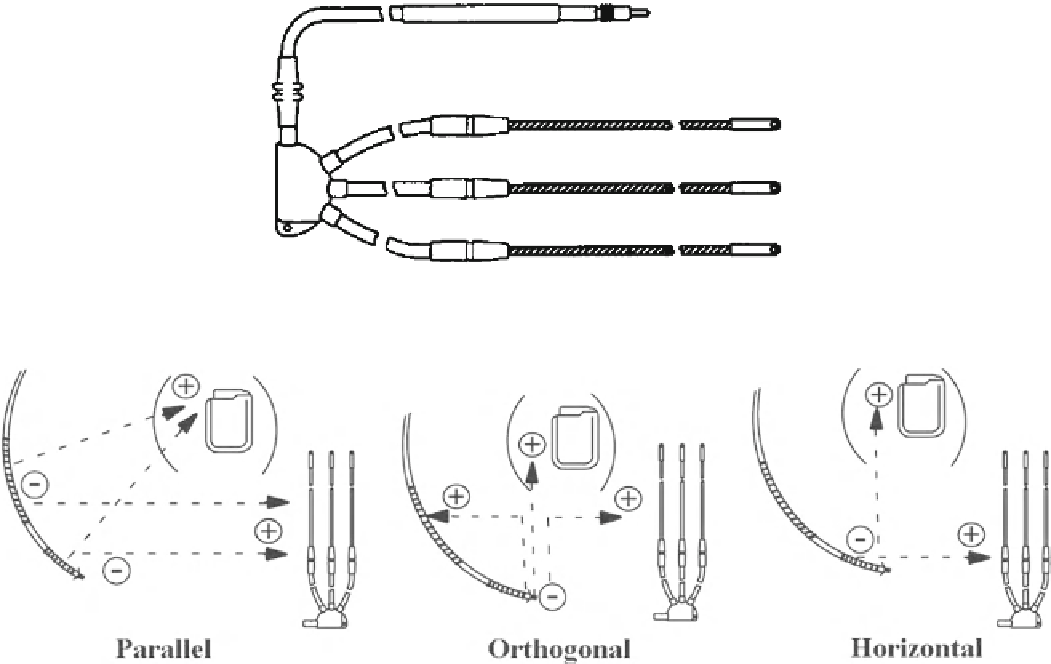Biomedical Engineering Reference
In-Depth Information
These leads often lack steroid elution, and pacing thresh-
olds are usually higher than that of the endocardial leads. It
is tolerated that electric parameters are worse by 50 %; this
means that the pacing threshold is 1.5 V and the amplitude of
the sensed R wave is 3 mV. Epimyocardial leads are con-
traindicated for patients with a myocardium changed by
fibrosis or for patients who went through a heavy myocardial
infarction. In addition, if there is excessive epicardial fat, the
results of the pacing cannot be satisfactory. If the lead will be
connected to the device later or if it is put out of operation,
the connector pin must be covered by the end-cap [59].
is 70 cm. The surface area of the shock electrodes reaches
nearly 4,000 mm
2
. We can expect that the decrease in the
de fi brillation threshold is about 30 % [ 60 ] .
The subcutaneous array lead might cause an increase in
the energy needed for cardioversion or defibrillation of the
heart by means of the external defibrillator. Therefore, it is
necessary to pay attention to the fact that the external
defibrillator leads must not be positioned directly on the elec-
trodes of the subcutaneous array leads. A decision about
which connection should be used for the SQ array intercon-
nection must be based on the demonstration of adequate
safety reserves under the programmed shock energy by means
of defibrillation threshold testing. Furthermore, the intercon-
nections require usage of unipolar and bipolar adaptors.
7.7
Subcutaneous Array Leads
Subcutaneous array leads are additional defibrillation leads
implanted to the subcutis at the left lateral side of the chest.
They improve distribution of the shock vector what covers
the capacity of the heart ventricles better. The implantation
of the additional lead represents a solution for patients with
high defibrillation thresholds. The lead is created by one or
several electrically active shock electrodes (see Fig.
7.12
)
that are connected to the implantable cardioverter-de fi brillator
by various ways, shown in Fig.
7.13
. An example of a subcu-
taneous lead is the SQ array lead
.
The length of the individ-
ual shock electrodes is approximately 20 cm; the total length
7.8
Connectors and Adaptors
Over a period of several decades of development of perma-
nent cardiac pacing and implantable defibrillation, many
types of lead connectors were launched on the market. They
are not always compatible with the ports used in device con-
nector headers. Therefore, in practice, the usage of adaptors
or universal adaptor sleeves might be required. In Tables
7.1
,
7.2
, and
7.3
, various types of lead connectors and adaptors
are shown [ 60, 61 ] .
Fig. 7.12
SQ array [60] (© 2012 Boston Scientific Corporation or its affiliates. All rights reserved. Used with permission of Boston Scienti fi c
Corporation)
Fig. 7.13
SQ array configurations [60] (© 2012 Boston Scientific Corporation or its affiliates. All rights reserved. Used with permission of Boston
Scienti fi c Corporation)



